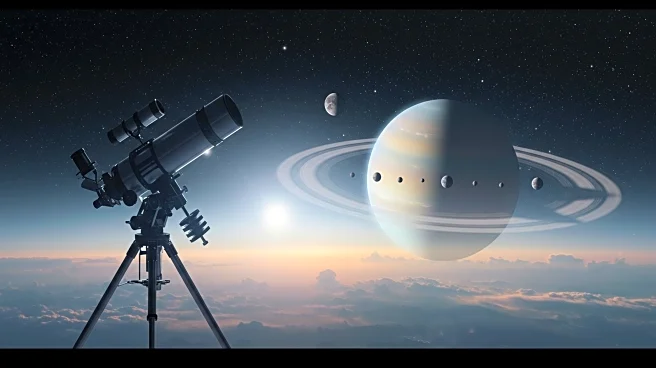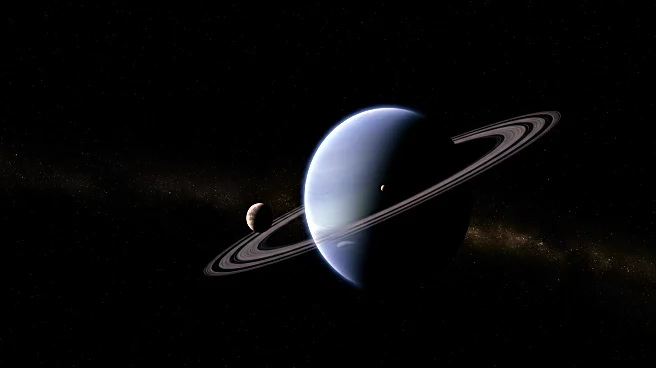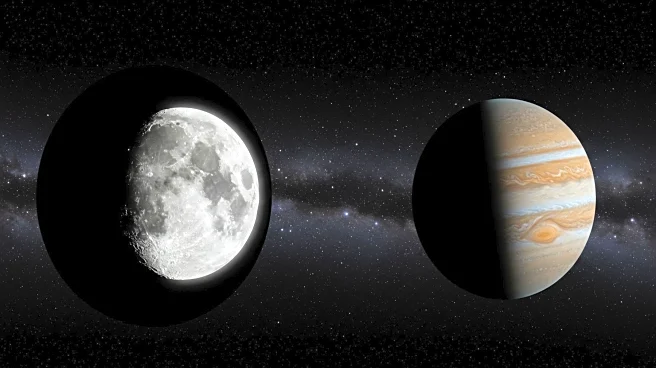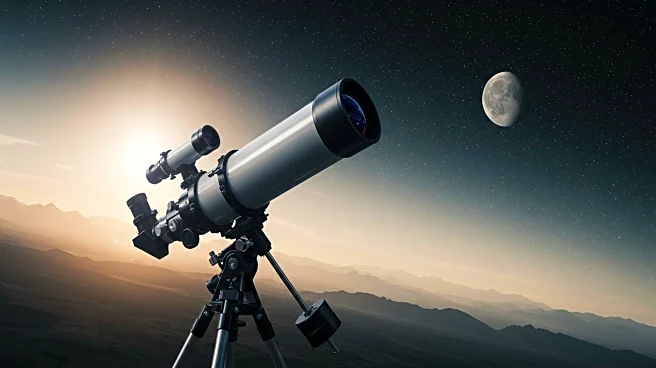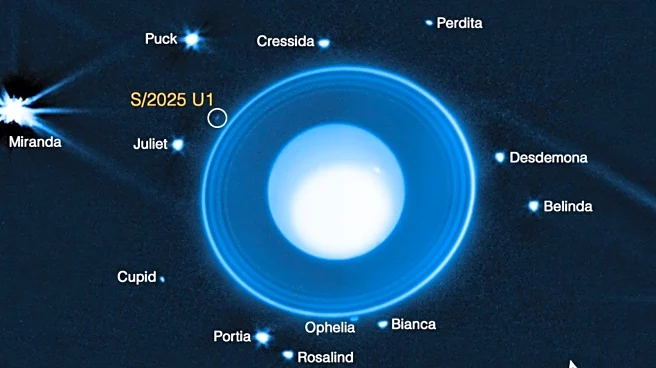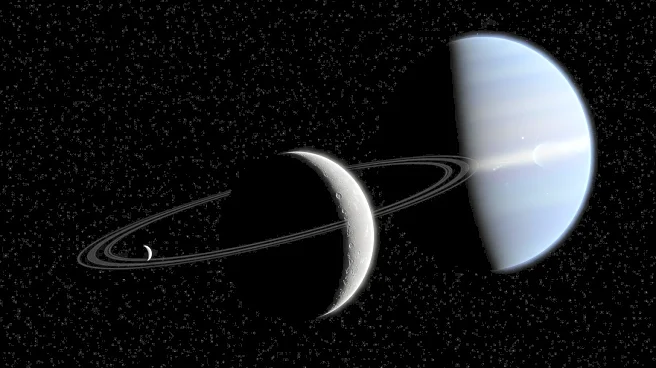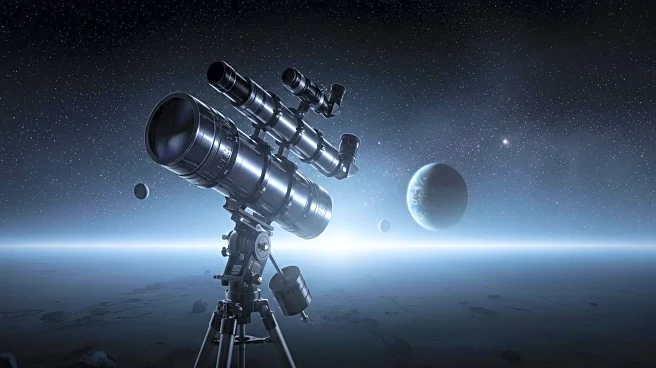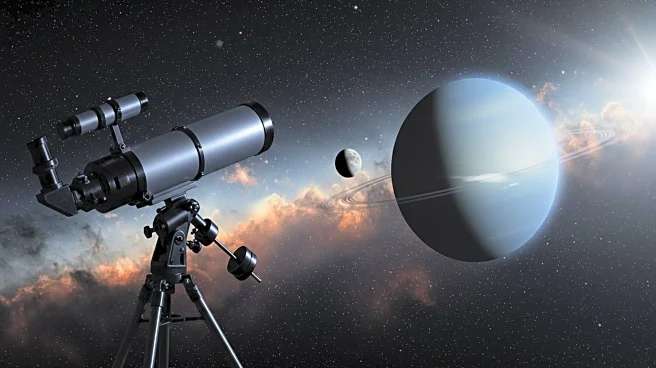Rapid Read • 7 min read
The James Webb Space Telescope has discovered a new moon orbiting Uranus, increasing the planet's known moons to 29. The moon, designated S/2025 U1, is approximately 6 miles in diameter and was detected using the telescope's near-infrared NIRCam. It orbits Uranus at a distance of 56,250 kilometers from the planet's center, situated between the moons Ophelia and Bianca. The discovery highlights the complexity of Uranus's moon system and suggests that more undiscovered moons may exist. The moon's nearly circular orbit indicates it may have formed in its current location.
AD
The discovery of a new moon around Uranus provides valuable insights into the planet's intricate system of rings and moons. It underscores the capabilities of the James Webb Space Telescope in revealing previously unseen celestial objects. Understanding the formation and dynamics of Uranus's moons can contribute to the broader study of planetary systems and the evolution of ice giants. The discovery also emphasizes the importance of continued exploration and observation of distant planets, potentially leading to further advancements in astronomy.
The newly discovered moon is yet to be formally named, following the tradition of naming Uranus's moons after characters from the works of William Shakespeare and Alexander Pope. Future missions to Uranus, planned for the early 2030s, may provide more detailed observations of the planet's atmospheric dynamics, magnetic field, and ring system. These missions could help determine whether Uranus's moons are ice-covered ocean worlds and shed light on the planet's extreme tilt and rings. Continued exploration and observation of Uranus may lead to further discoveries and advancements in planetary science.
AD
More Stories You Might Enjoy


